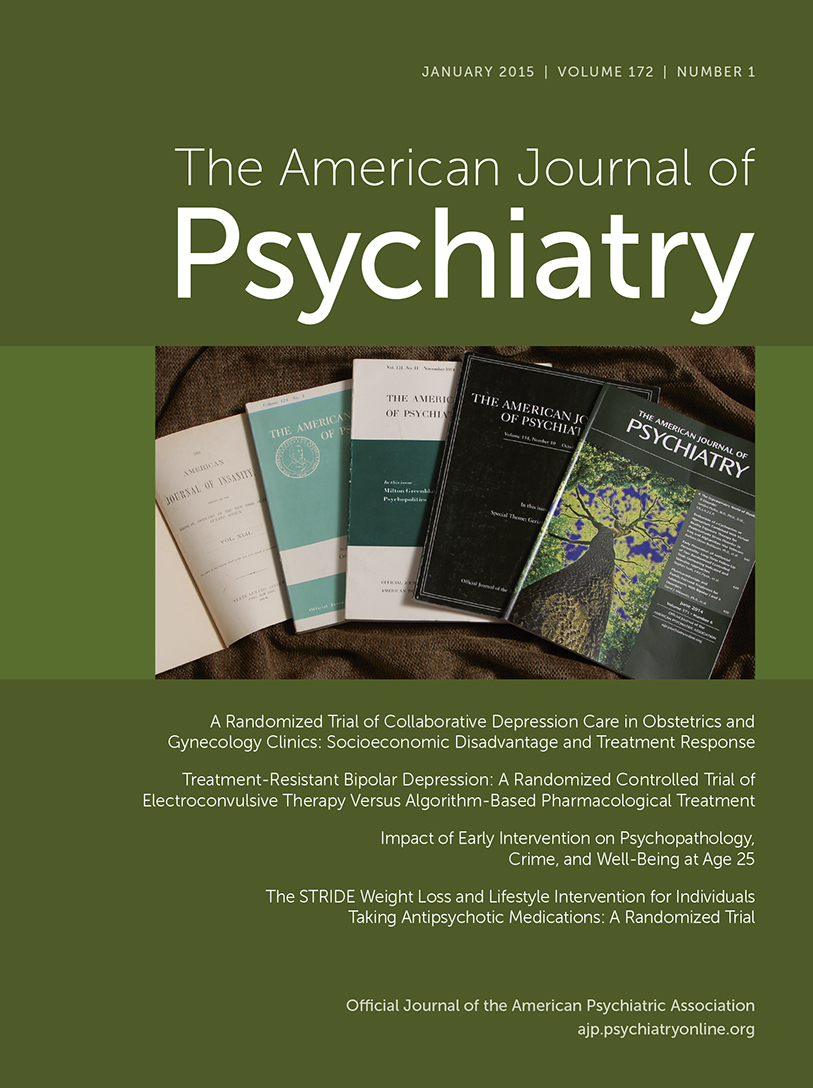Reversal of Non-Suppression of Cortisol Levels in a Patient With Refractory Depression Receiving Ketamine
To the Editor: Research has shown that the hypothalamic-pituitary-adrenal (HPA) axis is involved in the mediation of stress and depression (1). The dexamethasone suppression test (DST) consists of the administration of 1 mg of dexamethasone at 11:00 p.m. and measurement of cortisol at 8:00 a.m. and 4:00 p.m. the following day. Sixty percent of depressed patients do not show the anticipated suppression of cortisol. A positive dexamethasone suppression test is a cortisol level >5 mcg/dl at 8:00 a.m. or 4:00 p.m. (2).
Ketamine, administered intravenously, has been found to provide immediate but short-term relief of the depressed state (3–5). We decided to test the hypothesis that reversal of depression would reverse nonsuppression of cortisol levels in a consenting male patient with refractory depression.
“Mr. J,” a 46-year-old man with treatment-resistant depression, was hospitalized following a serious suicide attempt. He had failed trials of selective serotonin reuptake inhibitors, tricyclic antidepressants, antipsychotics, lithium, lamotrigine, riluzole, and ECT. In preparation for a trial of tranylcypromine, we discontinued the patient’s current medications and initiated intravenous ketamine infusions at 0.5 mg/kg over the course of 40 minutes each. Prior to the patient’s first ketamine infusion, his DST showed nonsuppression, with an 8:00 a.m. cortisol level of 1.7 mcg/ml and a 4:00 p.m. cortisol level of 7.4mcg/ml. After three alternate-day infusions of ketamine, his mood improved dramatically, with a 50% reduction in his Hamilton Depression Rating Scale score. Repeat DST showed suppression with 8:00 a.m. and 4:00 p.m. cortisol levels of 1.1 and 1.0, respectively (normalized). One week after discontinuation of ketamine, the patient’s symptoms returned. Prior to starting the monoamine oxidase inhibitor, and upon re-emergence of symptoms, his cortisol levels were once again nonsuppressed, with levels of 7.7 mcg/ml and 14.5 mcg/ml, respectively.
HPA axis dysregulation occurs frequently with depression and with states of stress. To our knowledge, this is the first report demonstrating the use of DST during a ketamine infusion trial to track the changes in the regulation of this axis. The rapid changes in DST from nonsuppression to suppression to nonsuppression mirror the changes in the patient’s state of depressive symptoms. The role of ketamine in the HPA axis in depressed patients needs to be better elucidated and may help us understand the pathophysiology of the depressed state.
1 : Hypothesis of the neuroendocrine cortisol pathway gene role in the comorbidity of depression, type 2 diabetes, and metabolic syndrome. Appl Clin Genet 2014; 7:43–53Crossref, Medline, Google Scholar
2 : [Disruption of the homeostatic regulation of adrenal function in endogenous depression]. Zh Nevropatol Psikhiatr Im S S Korsakova 1978; 78:381–385 [Russian]Medline, Google Scholar
3 : A review of ketamine in affective disorders: current evidence of clinical efficacy, limitations of use and pre-clinical evidence on proposed mechanisms of action. J Affect Disord 2014; 156:24–35Crossref, Medline, Google Scholar
4 : Rapid-acting glutamatergic antidepressants: the path to ketamine and beyond. Biol Psychiatry 2013; 73:1133–1141Crossref, Medline, Google Scholar
5 : Ketamine as a fast acting antidepressant: current knowledge and open questions. CNS Neurosci Ther 2013; 19:428–436Crossref, Medline, Google Scholar



